Related Research Articles

A comic strip is a sequence of drawings, often cartoon, arranged in interrelated panels to display brief humor or form a narrative, often serialized, with text in balloons and captions. Traditionally, throughout the 20th and into the 21st century, these have been published in newspapers and magazines, with daily horizontal strips printed in black-and-white in newspapers, while Sunday papers offered longer sequences in special color comics sections. With the advent of the internet, online comic strips began to appear as webcomics.
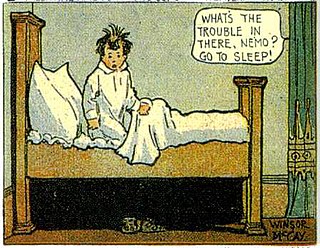
Little Nemo is a fictional character created by American cartoonist Winsor McCay. He originated in an early comic strip by McCay, Dream of the Rarebit Fiend, before receiving his own spin-off series, Little Nemo in Slumberland. The full-page weekly strip depicted Nemo having fantastic dreams that were interrupted by his awakening in the final panel. The strip is considered McCay's masterpiece for its experiments with the form of the comics page, its use of color and perspective, its timing and pacing, the size and shape of its panels, and its architectural and other details.

Matthew Abram Groening is an American cartoonist, writer, producer, and animator. He is the creator of the comic strip Life in Hell (1977–2012) and the television series The Simpsons (1989–present), Futurama, and Disenchantment (2018–present). The Simpsons is the longest-running U.S. primetime-television series in history and the longest-running U.S. animated series and sitcom.

Retroactive continuity, or retcon for short, is a literary device in which established diegetic facts in the plot of a fictional work are adjusted, ignored, or contradicted by a subsequently published work which breaks continuity with the former.

Dream of the Rarebit Fiend is a newspaper comic strip by American cartoonist Winsor McCay, begun September 10, 1904. It was McCay's second successful strip, after Little Sammy Sneeze secured him a position on the cartoon staff of the New York Herald. Rarebit Fiend appeared in the Evening Telegram, a newspaper published by the Herald. For contractual reasons, McCay signed the strip with the pen name "Silas".
Webcomics are comics published on a website or mobile app. While many are published exclusively on the web, others are also published in magazines, newspapers, or comic books.

Neal Adams is an American comic book artist. He is the co-founder of the graphic design studio Continuity Associates; and is a creators-rights advocate who helped secure a pension and recognition for Superman creators Jerry Siegel and Joe Shuster.

Elseworlds was the publication imprint for American comic books produced by DC Comics for stories that took place outside the DC Universe canon. Elseworlds publications are set in alternate realities that deviate from the established continuity of DC’s regular comics. The "Elseworlds" name was trademarked in 1989, the same year as the first Elseworlds publication.
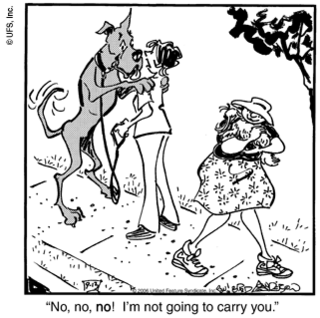
Marmaduke is a newspaper comic strip revolving around the Winslow family and their Great Dane, Marmaduke, drawn by Brad Anderson from June 1954 to 2015.

Stanley Melvin Berenstain and Janice Marian Berenstain were American writers and illustrators best known for creating the children's book series The Berenstain Bears.
A daily strip is a newspaper comic strip format, appearing on weekdays, Monday through Saturday, as contrasted with a Sunday strip, which typically only appears on Sundays.
A Lesson Is Learned But The Damage Is Irreversible (ALILBTDII) is a webcomic drawn by David Hellman and written by Dale Beran. Ted Rall described the comic as "explor[ing] the limits of pessimism and fatal consequence in a universe that would be difficult to imagine on the printed page." David and Dale are the primary characters, although they do not appear in every episode, and there is a small cast of real-life supporting characters, including schoolfriend/mad scientist Paul, Dale's sister Sally, and David's mother, Debby Hellman.
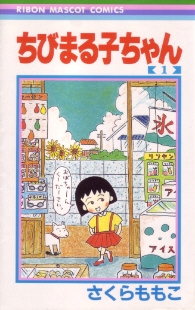
Chibi Maruko-chan is a shōjo manga series written and illustrated by Momoko Sakura. The series depicts the simple, everyday life of Momoko Sakura, a young girl everyone calls Maruko, and her family in suburban Japan in the year 1974. Maruko is a troublemaker, and every episode recounts Maruko's trouble and how she and her friends succeed in solving the situation. The series is set in the former of Irie District (入江町), Shimizu, now part of Shizuoka City, birthplace of its author.

Arlo and Janis is an American gag-a-day comic strip written and drawn by Jimmy Johnson. It is a leisurely paced domestic situation comedy. It was first published in newspapers on July 29, 1985.
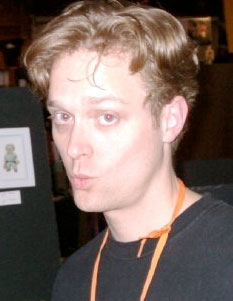
Jesse Reklaw is an American cartoonist and painter, author of the syndicated dream-based comic strip Slow Wave.

Dance, Voldo, Dance is a machinima-based music video produced in 2002 by Chris Brandt. The video, created using the fighting game Soulcalibur, features two players both controlling the character Voldo, using existing in-game animation to have the characters perform a synchronized dance to the song "Hot in Herre" by musician Nelly. The result of over a week's full-time preparation and training, the video was conceived after Brandt noticed the character's animations and attacks could be triggered in sync with the beat of a song, and the reactions of onlookers to such a display. While several groups demonstrated interest in showcasing the video, complications arose from the copyright holders whose works were involved in creation.

Freckles and his Friends is an American comic strip set in the peaceful small town of Shadyside where young Freckles McGoosey and his friends lived. Although the long-running strip, created by Merrill Blosser, is remembered for its continuing storyline involving a group of teenagers, it originally featured a child at the age of six or seven in gag-a-day situations.
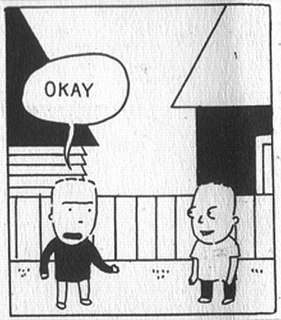
Migraine Boy is a comic strip created by cartoonist Greg Fiering, which has been published in several mainstream printed media and TV.

Ctrl+Alt+Del (CAD) is a gaming-related webcomic and animated series written by Tim Buckley. The name of the comic refers to the Windows command Control-Alt-Delete. Premiering on October 23, 2002, the comic's focus has gradually shifted away from single strip gags towards longer story arcs and greater continuity through the use of video game references. Ctrl+Alt+Del currently is updated every Monday, Wednesday and Friday.
Comics has developed specialized terminology. Some several attempts have been made to formalize and define the terminology of comics by authors such as Will Eisner, Scott McCloud, R. C. Harvey and Dylan Horrocks. Much of the terminology in English is under dispute, so this page will list and describe the most common terms used in comics.
References
- ↑ Oliver James (2005-11-24). "All you have to do is dream". London: The Guardian. Retrieved 2006-09-15.
- ↑ Jesse Reklaw (2005). "Slow Wave Turns Ten". Slowwave.com. Archived from the original on 2006-08-16. Retrieved 2006-09-15.
- ↑ Christopher Hicks (1996). "Special Interview: Jesse Reklaw". Electric Dreams. Retrieved 2006-11-12.
- ↑ Jesse Reklaw (2009). "Slow Wave Continuity". slowwave.com. Archived from the original on 2009-04-14. Retrieved 2009-04-28.
- ↑ Jesse Reklaw (2012-01-07). "Bluefuzz the Hero". slowwave.com. Retrieved 2012-02-27.